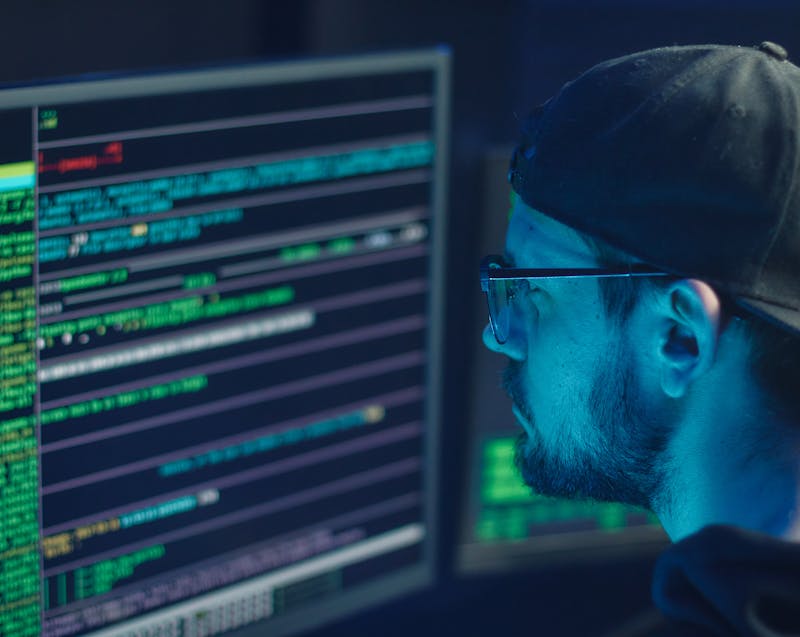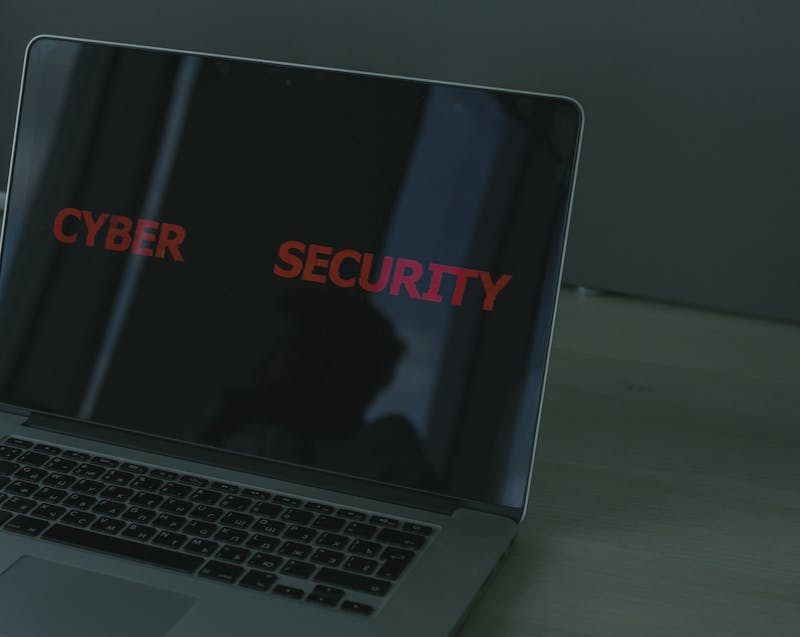- Cybersecurity monitoring is a continuous process of detecting, analyzing, and responding to threats across networks, systems, and data.
- Key components include SIEM, IDPS, EDR, threat intelligence platforms, and SOC teams, all working together for comprehensive protection.
- AI and machine learning now play a vital role in automating analysis, identifying patterns, and reducing response times.
- Effective monitoring requires clear objectives, centralized log management, automation, and regular updates to stay ahead of evolving threats.
- Common challenges include data overload, skill shortages, and integration complexity—but these can be overcome with strategic planning.
- Businesses should start small, scale gradually, and consider managed security providers if internal resources are limited.
- The future of cybersecurity monitoring lies in predictive analytics, cloud-native solutions, and zero-trust security frameworks.
Cybersecurity has become one of the most essential priorities in our increasingly connected world. Every day, countless attacks target individuals, businesses, and government systems—often without warning. While firewalls and antivirus tools provide some protection, they’re not enough on their own. To truly safeguard data and systems, organizations rely on cybersecurity monitoring—a continuous process that detects, analyzes, and responds to threats in real time.
This guide will explore how cybersecurity monitoring works, its main components, and the best practices that strengthen digital defenses. Whether you’re a beginner curious about cybersecurity or an aspiring IT professional, understanding how monitoring systems operate is key to appreciating how the digital world stays protected.
What Is Cybersecurity Monitoring and Why Does It Matter?
Cybersecurity monitoring refers to the ongoing observation and analysis of systems, networks, and data to detect suspicious activity or security breaches. Unlike traditional security setups that rely solely on preventive tools, monitoring provides visibility into what’s actually happening across an organization’s infrastructure.
It’s the digital equivalent of a 24/7 security camera—watching over servers, devices, and applications for anything unusual. The goal isn’t only to spot intrusions but also to detect early warning signs of potential risks before they escalate.
In today’s threat landscape, where cyberattacks are more sophisticated and frequent than ever, real-time monitoring has become indispensable. It helps organizations:
- Detect unauthorized access or malware infections quickly
- Prevent data breaches and financial losses
- Maintain compliance with industry regulations
- Build resilience against evolving threats
Without monitoring, threats can go undetected for weeks or even months, causing catastrophic damage.
How Does Cybersecurity Monitoring Work?
Cybersecurity monitoring works through a structured process that involves collecting, analyzing, and responding to data generated by various systems and devices within a network. Every log file, user action, or network request leaves behind digital traces that security tools analyze for patterns.
At its core, the monitoring process can be divided into three main stages:
1. Data Collection
This stage involves gathering data from multiple sources, such as:
- Firewalls
- Intrusion detection and prevention systems (IDS/IPS)
- Endpoint protection tools
- Cloud services and applications
- Network routers and switches
- Operating system and application logs
These data points provide the raw material for analysis. Without comprehensive data collection, blind spots may allow attacks to slip through unnoticed.
2. Data Correlation and Analysis
After collection, data is correlated and analyzed to identify patterns, anomalies, or potential security incidents. Security tools, such as Security Information and Event Management (SIEM) systems, use analytics engines to connect the dots between different events.
For instance, a single failed login might be harmless—but hundreds of failed logins from various locations could indicate a brute-force attack. Correlation helps distinguish normal user behavior from suspicious activity.
3. Incident Detection and Response
Once a potential threat is identified, alerts are generated for the security team. Depending on the severity, automated systems might isolate affected devices or block IP addresses. Security analysts then investigate the alert, verify if it’s a genuine threat, and take corrective actions such as patching vulnerabilities or restoring compromised data.
This continuous loop of monitoring, detecting, and responding keeps organizations proactive against evolving cyber threats.
Key Components of a Cybersecurity Monitoring System

Before delving into best practices, it’s essential to understand the building blocks that make cybersecurity monitoring effective. These components work together to provide visibility, context, and defense across an organization’s entire digital ecosystem.
1. Security Information and Event Management (SIEM)
SIEM is the central hub for cybersecurity monitoring. It aggregates log data from various sources, correlates it, and provides alerts based on predefined rules or behavioral analysis. Modern SIEM platforms often integrate with artificial intelligence to identify subtle patterns that humans might miss.
2. Intrusion Detection and Prevention Systems (IDPS)
An IDPS monitors network traffic for malicious activity or policy violations.
- Intrusion Detection Systems (IDS) notify administrators of potential threats.
- Intrusion Prevention Systems (IPS) automatically block malicious traffic once detected.
Together, they form the frontline defense of network security.
3. Endpoint Detection and Response (EDR)
Endpoints—such as laptops, servers, and mobile devices—are prime targets for attackers. EDR tools continuously monitor endpoint activities, detect anomalies, and allow quick isolation of infected devices.
4. Network Monitoring Tools
Network monitoring tools track data flow, bandwidth usage, and connection anomalies. They ensure that any unusual network activity, like data exfiltration or communication with suspicious servers, is detected early.
5. Threat Intelligence Platforms (TIP)
TIPs collect and analyze data about emerging threats worldwide. By integrating threat intelligence feeds, monitoring systems can proactively identify known malicious IPs, domains, and attack signatures.
6. User and Entity Behavior Analytics (UEBA)
UEBA systems use machine learning to understand normal user behavior and detect deviations—such as an employee accessing sensitive files at odd hours or from an unusual location.
7. Security Operations Center (SOC)
The SOC serves as the nerve center of cybersecurity monitoring. It’s a dedicated team of analysts who monitor alerts, investigate incidents, and coordinate responses around the clock.
Together, these components form a layered defense approach that minimizes risk and maximizes response speed.
The Role of Artificial Intelligence in Cybersecurity Monitoring
With the sheer volume of data generated by organizations, manual monitoring is no longer feasible. Artificial Intelligence (AI) and Machine Learning (ML) have transformed cybersecurity monitoring by automating detection and decision-making processes.
AI-driven systems can:
- Analyze millions of logs in seconds
- Recognize abnormal patterns that humans might overlook
- Prioritize alerts based on threat severity
- Learn from past incidents to improve detection accuracy
For example, AI can identify a subtle insider threat—a legitimate employee accessing data inconsistently with their past behavior—something traditional rule-based systems might miss.
Machine learning algorithms evolve over time, helping monitoring systems stay adaptive against new attack vectors. In a world where threats constantly mutate, AI ensures cybersecurity monitoring remains proactive rather than reactive.
Challenges in Implementing Cybersecurity Monitoring
Despite its advantages, implementing an effective cybersecurity monitoring system presents several challenges. Understanding these obstacles helps organizations plan better and maintain realistic expectations.
1. Data Overload
Organizations generate massive amounts of log data daily. Without proper filtering and correlation, security teams can become overwhelmed by false positives and irrelevant alerts.
2. Skill Shortage
There’s a global shortage of skilled cybersecurity professionals. Many organizations struggle to find analysts who can interpret alerts, investigate incidents, and fine-tune monitoring systems effectively.
3. Integration Complexity
Modern IT environments often include on-premises, cloud, and hybrid infrastructures. Integrating all these systems into a unified monitoring framework can be technically challenging.
4. Cost Constraints
High-quality tools like SIEM and EDR solutions can be expensive, especially for small and medium-sized businesses. Balancing cost and security is a persistent challenge.
5. Evolving Threat Landscape
Cybercriminals continually develop new tactics. Monitoring systems must be updated frequently to stay effective against zero-day exploits and emerging vulnerabilities.
Addressing these challenges requires a strategic approach—one that combines technology, skilled personnel, and continuous improvement.
Best Practices for Effective Cybersecurity Monitoring
A strong cybersecurity monitoring strategy isn’t built overnight. It requires deliberate planning, regular updates, and adherence to proven best practices. Below are actionable recommendations to help improve the effectiveness of any monitoring framework.
1. Establish Clear Monitoring Objectives
Define what you want to achieve through monitoring. Objectives may include compliance, data protection, or early threat detection. Clear goals guide the choice of tools, alert thresholds, and reporting structures.
2. Centralize Log Management
Consolidate logs from all systems into a single platform, such as a SIEM. Centralization simplifies analysis, enables better correlation, and improves response time.
3. Automate Where Possible
Automation is crucial for handling repetitive tasks. Use automation for:
- Alert triaging
- Routine incident response actions
- Threat intelligence updates
Automation allows analysts to focus on complex investigations rather than routine monitoring.
4. Regularly Update Detection Rules
Threats evolve constantly. Update your detection rules and signatures to include the latest attack patterns and vulnerabilities. Continuous tuning ensures that monitoring remains relevant and accurate.
5. Implement Role-Based Access Controls
Limit access to monitoring tools and data. Ensure only authorized personnel can view sensitive information or modify alert configurations. This prevents internal misuse or accidental exposure.
6. Integrate Threat Intelligence Feeds
Subscribe to reputable threat intelligence sources to keep your monitoring systems aware of the latest malware, phishing campaigns, and attack indicators.
7. Conduct Regular Security Audits
Periodic audits help identify blind spots, outdated configurations, and process inefficiencies. Use audits to refine alerting rules and improve incident response workflows.
8. Establish an Incident Response Plan
When alerts indicate a threat, teams must respond quickly. A well-defined incident response plan outlines the steps to contain, eradicate, and recover from cyber incidents effectively.
9. Train and Upskill Staff
Human expertise is still vital. Train your IT and security teams to interpret alerts, analyze patterns, and respond promptly. Encourage ongoing education and certifications.
10. Test Your Monitoring Systems
Simulate attacks to test whether your monitoring system detects them. Tools like penetration testing and red teaming help verify the system’s effectiveness and resilience.
By following these best practices, organizations can turn cybersecurity monitoring into a strategic advantage that not only prevents attacks but also strengthens trust and reputation.
How to Get Started with Cybersecurity Monitoring
For those new to cybersecurity or small organizations just beginning their security journey, starting with monitoring can feel daunting. The key is to begin small and scale gradually.
Here’s a practical roadmap:
- Assess Your Current Environment
Identify critical assets—data, systems, and processes that require the highest level of protection. - Select the Right Tools
Choose monitoring solutions that align with your organization’s size, budget, and infrastructure. Open-source tools like Wazuh or Snort can be excellent starting points. - Establish a Baseline
Understand what normal network and user behavior look like. This helps you identify anomalies accurately later. - Define Alerts and Responses
Configure alert thresholds and document how your team should respond to various types of alerts. - Monitor and Refine Continuously
Regularly review logs, analyze alerts, and adjust rules. Monitoring isn’t a one-time task—it’s an ongoing process of improvement. - Consider Outsourcing to a Managed Security Service Provider (MSSP)
If internal resources are limited, MSSPs can provide 24/7 monitoring at a fraction of the cost of maintaining an in-house SOC.
Starting early, even with basic tools, can dramatically improve your security posture over time.
The Future of Cybersecurity Monitoring

As technology evolves, so does the landscape of cybersecurity monitoring. Future trends are expected to focus on predictive analytics, cloud-native security, and zero-trust architecture.
Key developments include:
- AI-Driven Predictive Threat Detection: Future monitoring systems will predict attacks before they happen by analyzing behavioral trends.
- Cloud and Container Monitoring: As more workloads move to the cloud, monitoring tools will adapt to secure dynamic environments.
- Integration with Zero Trust Security Models: Monitoring will become a central component of zero-trust frameworks, ensuring every user and device is continuously verified.
- Greater Automation: Response times will shorten dramatically as automated systems take over repetitive and time-sensitive tasks.
The evolution of cybersecurity monitoring will make digital environments not only more secure but also more intelligent and adaptive.
Conclusion
Cybersecurity monitoring is no longer a luxury—it’s a necessity for anyone operating in today’s digital ecosystem. From individuals to multinational corporations, the ability to detect, analyze, and respond to cyber threats in real time is the cornerstone of modern security.
Understanding how cybersecurity monitoring works allows you to appreciate the layers of defense operating behind every secure transaction, login, or data exchange. With the right tools, strategies, and best practices, organizations and individuals can build systems that not only detect attacks but also learn from them, adapt, and grow stronger with every challenge.
